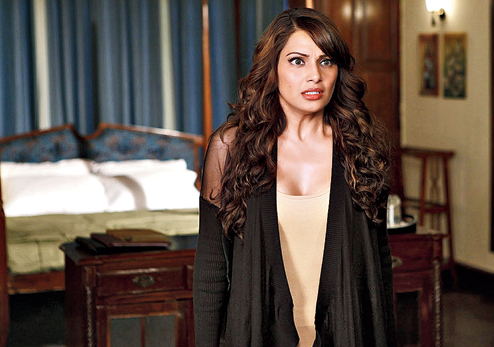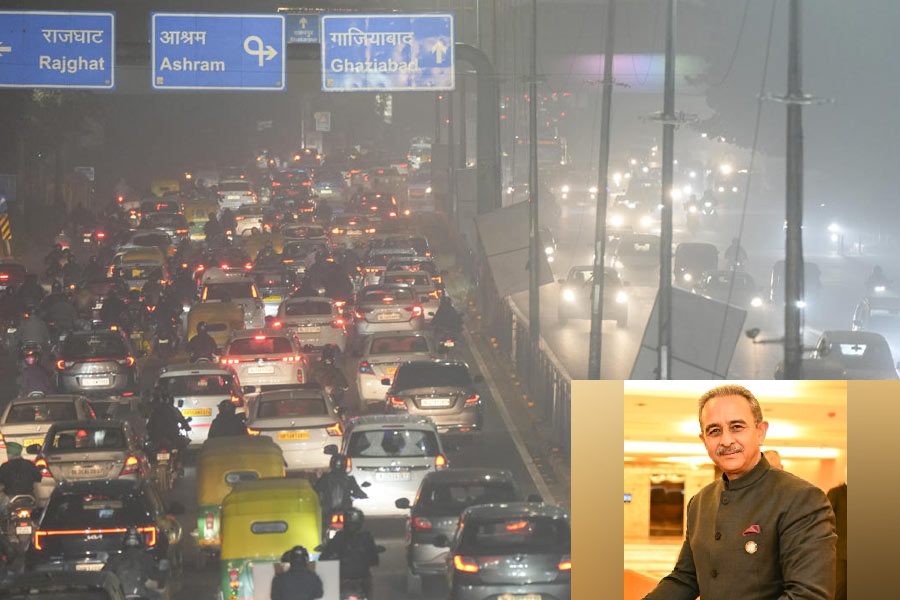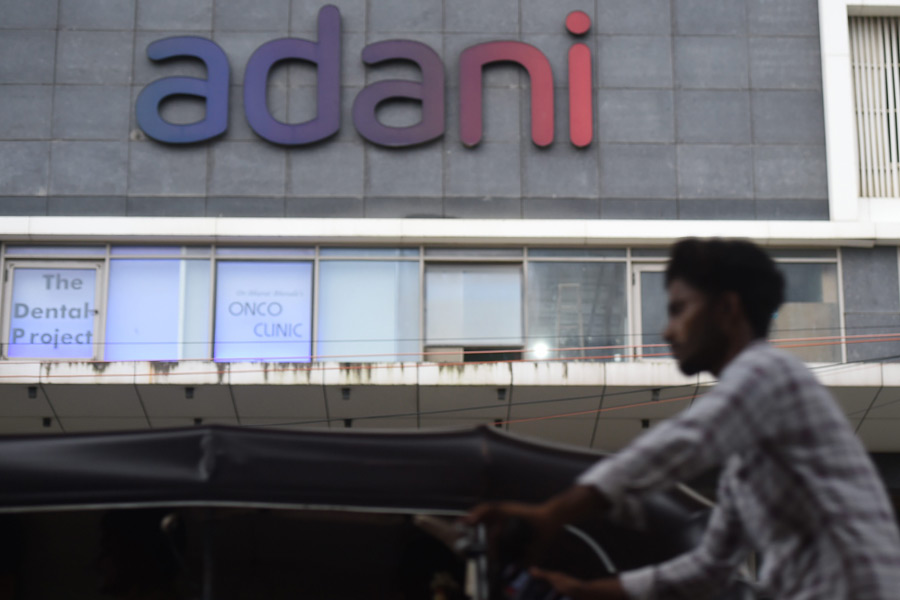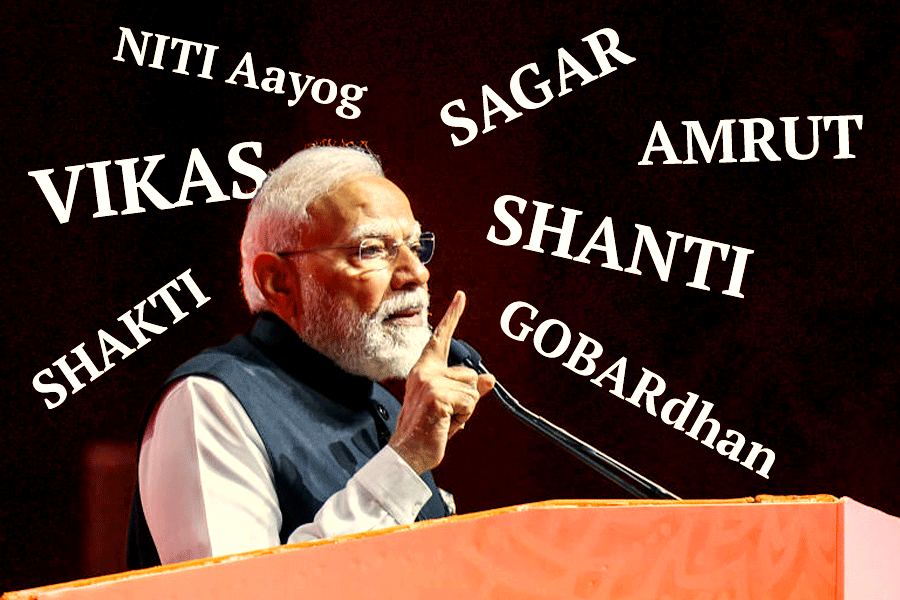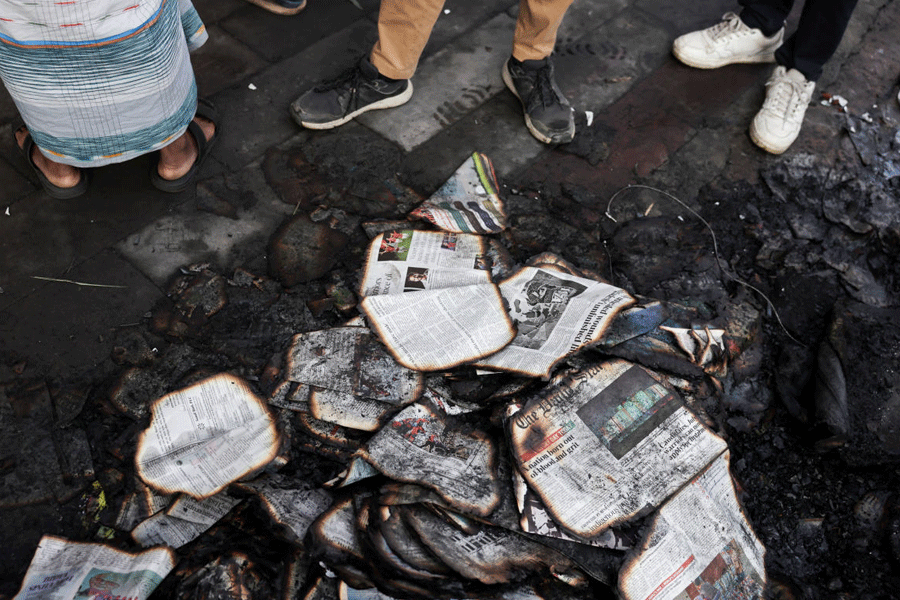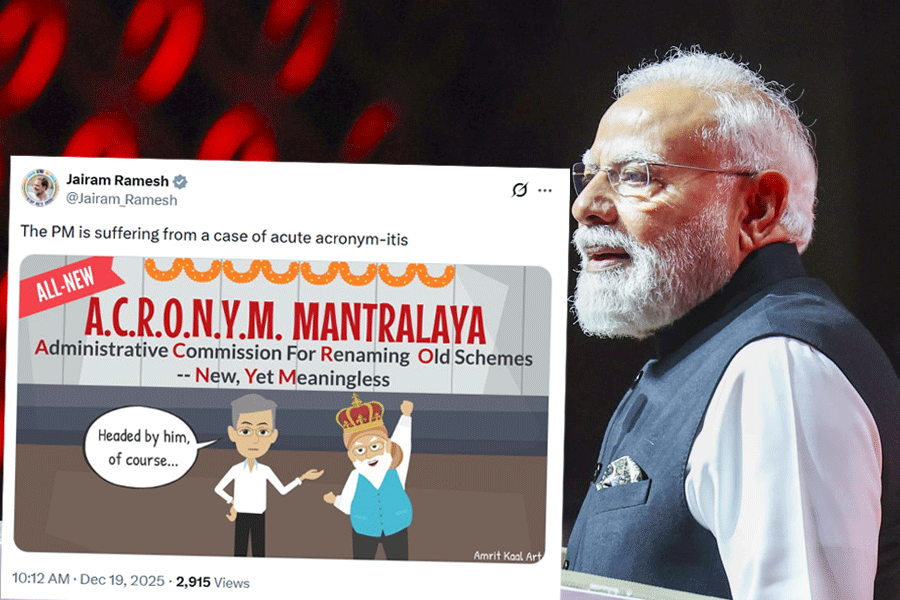 |
| Gentle strokes: Bikram Ghosh and Partho Bose |
Kuhak, reputed for staging successful plays for 28 years now, dared to cast its spell in the realm of North Indian classical music programmes, armed with young musicians albeit well established in their respective fields. Going by the trend these days, to draw a sizable number of listeners one needs the helping hands of at least a star artiste or two. Kuhak’s effort, in aid of Navanir – an old age home for ladies — was more-or-less a success in this respect.
The G.D. Birla Sabhaghar wore a festive look on the evening of February 10. However, the stage décor with huge floral motifs and butterflies was more suitable for a garden scene in a jatra. The proceeds of the ticket sales were handed over to Parul Mukherjee who represented the inmates of the home. Renowned poet Joy Goswami, the city of joy’s young, intellectual face, inaugurated the function and introduced Partho Bose, the city sitar player with a reputation for systematic raga portrayal, and his star accompanist Bikram Ghosh, the famous tabla exponent with a Grammy under his belt, a studiedly acquired playboy image and a touch of Tollywood greasepaint apart from his innovative fusion music and background scores for quite a few films. Ghosh, of course, is one of the best tabla accompanists today as well and has, apart from Pandit Ravi Shankar, accompanied instrumentalists of the calibre of Ustad Ali Akbar Khan and Ustad Amjad Ali Khan with great success.
After almost 55 minutes of initial formalities, Partho Bose settled down to start his alap in the evening raga Puria Dhanashri. The raga was at one time also known as “Deen ki Puria”, that is Puria of the day, Puria proper, of course, being a night raga. Which implies Puria Dhanashri was not played in the evening as it is today but in the late afternoon and before the sunset in the slot now occupied by ragas like Multani, also played or sung in the evening now as there are no late afternoon programmes.
The very first phrase of the alap: Ni re ni dha pa and frequent emphasis upon the phrase Ma re ga brought out the essence of the raga. The raga moves around mainly in the top half of the scale or the uttarang as it is called in the parlance of classical music. The note where most phrases end and originate is the middle register or Madhya saptak pancham or the major fifth. The phrase Ma ga ma re ga and its corollary Ma re ga are the only ones in the lower half or the first tetra chord of the scale. These phrases are from the raga Puria and set it apart from the major dusk raga Poorvi and also give it a less sombre character. More than half of the 25-minute alap was restricted within the resonant sphere of mandra and ati mandra saptak. That is, it was in the alap format originating from the late Ustad Allauddin Khan’s Maihar Gharana. Playing sitar alaps in the the bass octave was generally started by Pandit Ravi Shankar, Allauddin Khan’s prime sitar disciple, who added an extra bass string, the mandra sadaj, to the instrument for the purpose.
After 10 minutes of jod, two loud chikari strokes announced the arrival of jhala but the slow medium teental gatkari was played with very gentle, loving strokes by the sitar player. Bikram Ghosh kept the mood intact with an equally gentle yet sparkling utthaan ending with a softly ebbing tehai that mingled with the sam.
Partho Bose was not so effective in the long glides and chhoot swaras but his intricate rhythmic variations interwoven with melodic patterns and judicious use of the krintan (which corresponds to the squash note of Western music) were enjoyable. The faster composition set to ektal was studded with quite a few fast-running ekhara taans. After a session of bold and power-packed taan-toda, his softly trailing tehais, deftly supported by the tabla, brought drama with telling effect. But as things warmed up, bolder strokes replaced the soft ones at the cost of melody and note accuracy.
At times Bikram Ghosh overshadowed the sitar player with his improvisations in which the electrifying clarity of the bols of his tabla and the melody of his bayan played a major role. In this way, ex cellent tabla-playing compensated for the lack of excellence in performance of the main artiste in the later half of the drut gatkari. The lesson here for the sitar player is that one ought to play within one’s limits. There should be nothing less than perfect in the music an artiste plays for an audience of any sort.
Proper balance between melody and rhythm, by the way, are among the main characteristics of what is known today as the Maihar Gharana style as popularised by Pandit Ravi Shankar and the late Nikhil Banerjee in the realm of sitar music.
The second and concluding session featured the raga Mishra Kafi. Here Partho Bose began with a liltingly melodic aochar and then went on to play two compositions in rupak and sitarkhani talas and ended with jhala in ati drut teental.

